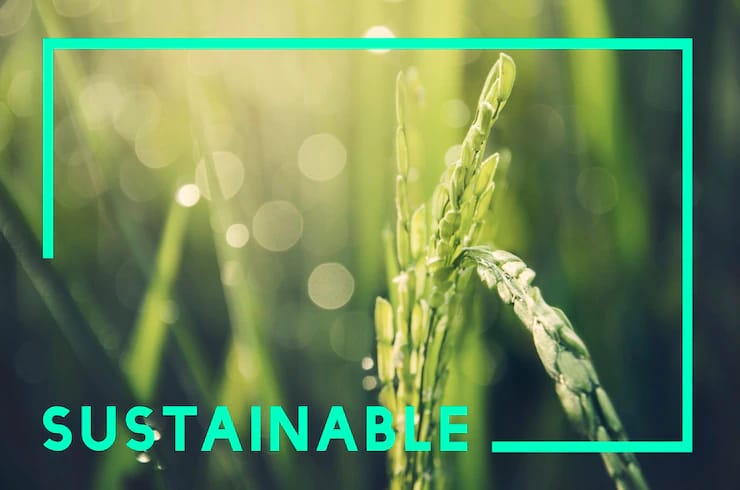Written By: Hajra Javed
The pressing need to combat climate change and lessen our dependency on limited fossil fuel resources has sparked a worldwide transition to renewable energy sources. Renewable energy is produced from plentiful and continuously renewing sources like sunshine, wind, water, and geothermal heat. Their use can fundamentally change how our world will be sustained. The various advantages of renewable energy will be covered in this blog article. In addition, we will shed light on how their adoption is essential for reducing climate change. Furthermore, their role in supporting energy security, spurring economic development, enhancing public health will also be studied. By realizing its revolutionary potential, we will recognize the critical role of renewable energy in laying the foundation for a sustainable future.
Environmental benefits
Mitigating climate change
One of the biggest concerns mankind is facing is climate change. Renewable energy is crucial in the fight against it. Large quantities of carbon dioxide enter the environment due to the combustion of fossil fuels. This contributes to the greenhouse effect and, ultimately, global warming. Renewable energy helps to:
- Stabilize global temperatures.
- Reduce the frequency.
- Severity of severe weather events.
- Protects ecosystems by lowering greenhouse gas emissions and controlling the release of carbon dioxide.
The International Energy Agency (IEA) estimates that in 2020 alone, the adoption of renewable energy sources will avert around 2.6 gigatons of carbon dioxide emissions. That’s like taking 550 million automobiles off the road for a year. By 2050, the widespread use of renewable energy sources may cut global carbon dioxide emissions by as much as 70 percent. In this way, it contributes to the Paris Agreement’s target of keeping warming below 2 degrees Celsius.
1. Solar Energy
Over the last decade, solar energy has shown phenomenal expansion and price reductions. By the end of 2020, the world’s solar photovoltaic (PV) system’s installed capacity had increased to 773 GW from 40 GW in 2010. The declining costs of solar panels, together with government incentives and supporting legislation, have been major factors in this expansion. In fact, solar power has surpassed fossil fuel-based alternatives. It has emerged as the most cost-effective means of generating energy in many regions of the globe.
2. Wind energy
The wind energy industry has also grown significantly. Over 743 GW of installed wind generating capacity worldwide as of 2020 means clean power for millions. Wind energy has become an increasingly important component of the energy system in various nations. Examples include Denmark, which generates over 40% of its electricity from wind power. Germany, the United States, and China also have made substantial investments in wind energy infrastructure.
3. Hydropower
When it comes to sustainable energy, hydropower still dominates worldwide. About 16% of the world’s power comes from it. Numerous large-scale hydroelectric projects, such as China’s Three Gorges Dam and Paraguay’s Itaipu Dam, have substantially contributed to reduced carbon dioxide emissions.
4. Geothermal energy
Although geothermal energy only makes up a tiny percentage of the world’s renewable energy capacity, its potential is enormous. Geothermal power plants use the Earth’s internal heat to produce energy. Countries like Iceland, the Philippines, and Kenya, have access to geothermal resources. These countries have greatly benefited from harnessing this eco-friendly energy. In addition to being a sustainable source of electricity, geothermal energy leaves practically little trace on the environment. This is due to its low greenhouse gas emissions.
Energy Security and Independence
By incorporating renewables into the grid, we can increase our energy independence and safety. Renewable energy sources, in contrast to limited fossil fuel reserves, are easily accessible and plentiful. For regions working towards energy independence, cutting their ties to foreign fuel imports and the global energy market’s inherent instability is of paramount importance. Energy security is bolstered, geopolitical tensions are mitigated, and local economies are boosted. In addition, new jobs are created by the transition to domestic renewable energy generation.
Economic Advantages
The expansion of renewable energy sources drives productivity and creativity. Incredible technological progress has allowed for decreased prices and more accessibility in this market. The price of solar photovoltaic (PV) panels has dropped dramatically in recent years. As a result, alternative energy sources have become more accessible. Wind energy costs have decreased as wind turbines have improved in efficiency and affordability. Long-term savings, stability, and hedges against volatile fuel costs are all available with renewable energy systems.
Investment in renewable energy infrastructure also boosts local economies. It lures new capital, generates employment opportunities, and develops a more capable labour force. Over 11 million individuals had jobs in the renewable energy industry in 2018. This figure is likely to rise sharply in the years ahead, as reported by IRENA. Renewable energy projects provide jobs for people with a wide range of skill sets. The skill sets vary from manufacture and installation to operations and maintenance.
Health and Social Benefits
Changing to renewable energy sources has positive effects on people’s health and well-being all over the globe. Pollution from fossil resources has proven detrimental for your lungs and heart. We can reduce these health risks and make the world better for future generations by switching to renewable energy sources. Electricity produced from these sustainable sources does not release harmful pollutants like sulfur dioxide or nitrogen oxides into the atmosphere.
In addition, local communities are often involved in and offered the opportunity to own and operate renewable energy projects. Renewable energy projects in the community let people help themselves by giving them the tools to meet their energy demands. Communities may become energy producers by:
- Putting solar panels on roofs
- Establishing wind farms
- Building small-scale hydropower projects
This will result in lower energy bills and new revenue streams.
Conclusion
As we strive for a sustainable future, embracing renewable energy sources is vital to achieving our goals. The environmental benefits, energy security and independence, economic advantages, health and social benefits, and the crucial role in mitigating climate change highlight the significance of transitioning to renewable energy. By supporting research, investing in renewable energy projects, and adopting renewable technologies, we can create a sustainable world for future generations. Let us harness the power of renewable energy and propel ourselves into a future built on sustainability and innovation.










